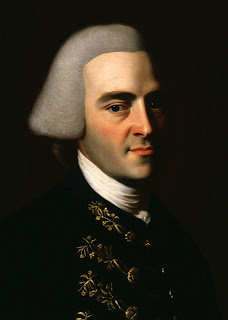Nat Philbrick’s Bunker Hill: Talks, Reviews, and a Giveaway
Today is the publication date of Nathaniel Philbrick’s new book, Bunker Hill: A City, A Siege, A Revolution. He’s speaking about it three times this week in Massachusetts:
- Wednesday, 1 May, 6:00 P.M., Coolidge Corner Theater, Brookline. Co-sponsored by the Brookline Booksmith and the Massachusetts Historical Society. Tickets are $5 per person from the bookstore, or free to someone who buys a copy of the book there.
- Thursday, 2 May, 7:00 P.M., American Antiquarian Society, Worcester. Free to the public.
- Friday, 3 May, 6:30 P.M., the Bostonian Society’s Old State House Museum, Boston. Free to the public.
Bunker Hill has been garnering some very good reviews. David M. Shribman wrote in the Boston Globe:
Everyone in these precincts knows this story, or apocryphal strains of it: that the Battle of Bunker Hill really was fought on Breed’s Hill, that June 17 forevermore would be a red date on local calendars, that the heroic Joseph Warren died in battle as a nation was being born. Yet this is but the skeleton of the story Nathaniel Philbrick tells in Bunker Hill, a masterpiece of narrative and perspective by an author who has helped us look anew at the voyage of the Mayflower and the passage of George Armstrong Custer.Thomas Fleming, who began his own career writing about the Revolution with a book on this battle, Now We Are Enemies, wrote in the Wall Street Journal: “Mr. Philbrick tells the complex story superbly, from the American and British points of view…[with an] emphasis on the flaws that afflicted both sides.” Tony Horwitz walked the battlefield with Nat Philbrick for Smithsonian magazine.
Walter Isaacson mused in the Washington Post:
The Committees of Correspondence conjured up comparisons to the role played in Tahrir Square by Facebook and other social networks. The affair of the purloined Hutchinson Letters reminded me of WikiLeaks, the rides of Paul Revere and William Dawes reminded me of Twitter, and the Tea Party reminded me of, well, the tea party. As Philbrick writes, “Samuel Adams and his compatriots had created what was, in essence, an extralegal, colony-wide network of communications that threatened to preempt old hierarchical form of government.”At All Things Liberty, Hugh T. Harrington focused on scope and sources:
But the most interesting lesson was that, even though the American Revolution might have been partly kindled by social networks, it was taken over and won by militias. Those who pamphleteer and blog, talk and tweet, cannot control the course of events as handily as those who are willing to put their lives on the line. The revolution will not be tweeted.
Despite a title that suggests a narrow focus on a single battle, Bunker Hill does a superb job setting the stage for the Siege of Boston and the climatic action that took place on Breed’s Hill. Coverage of the Committees of Correspondence is outstanding. One may grumble that some other aspects such as the Tea Party and the raid on Fort William and Mary could have been treated more thoroughly but even in a book reaching 400 pages it is clear that not everything can be detailed in a single volume. What is presented is an outstanding overview.Harrington acknowledges that the endnotes in Bunker Hill explain the sources Nat Philbrick relied on and, in some cases, acknowledge that other historians (like myself) disagree on certain stories’ reliability. Readers can then make up their own minds. That makes Bunker Hill definitely a book in which one should read the notes.
Maps are essential to understanding the story and following the action. Fortunately excellent, clearly readable and simple maps are provided. The book provides outstanding coverage of the big picture of what was happening, who was doing it and why.
However, the strong reliance upon 19th century secondary sources to add details and color to the narrative is disappointing. Much of what was written in the 19th century falls into the category of legend, hearsay, or simply entertaining stories that do not always stand up well to historical scrutiny.
Over the next couple of days, I’ll share a question-and-answer with Nat Philbrick about this book. But first, Boston 1775 has a copy of Bunker Hill to give away. As usual, I’m tying this giveaway to a question of historical knowledge:









